Header logo
header top contact widget
Periodontitis
Amazing Technology In Treating Gum Disease
Posted on May 09, 2023 by William J. Claiborne, DDS MS
Recently, an episode of the CBS News’ television program “60 Minutes” provided an in-depth update on the development of prosthetic limbs. Now “robotic” in description, advancements are making it possible for people with spinal cord injuries and amputations to control prosthetic limbs with their minds, including grasping objects.
What is miraculous, however, is how these advanced prosthetics can also restore a sense of touch to their brains. The decades-long project is due in most part to the Defense Department.
https://www.gao.gov/products/gao-22-106118
Technology today is remarkable. Advancements are moving forward at an impressively accelerating pace. We are witnesses to the the repair and rejuvenation of bodily parts in almost a “good as new” state. This is also true in the area of dental technology.
A periodontist is often a “behind the scenes” dental specialist, working with general dentists and various other dental specialists. While periodontists may be in the background, they stay busy. In addition to treating all stages of gum disease, these specialists have advanced skills in the placement of dental implants.
It is estimated that over 47% of American adults have some level of periodontal (gum) disease. This disease is the nation’s number one cause of adult tooth loss. However, gum health needs to be seen by the general population as a vital player in one’s overall health.
The destruction of periodontal disease is not just confined to the mouth. It spreads. Gum disease destroys bone structures below the gums. These structures are the upper and lower jaw bones, which support natural tooth roots.
The jaw bones are actually kept healthy by the presence of tooth roots. These roots provide stimulation to the bone as well as nourishment that feeds through the tooth’s interior.
By holding their roots securely, the jaw bones provide natural teeth with a sturdy foundation. This enables the ability to bite and chew comfortably and dependably.
However, when a natural tooth is lost, so is the stimulation and nourishment to that area of the jaw bone. Without it, the bone begins to shrink. As it declines in mass, the adjacent teeth are more vulnerable to loss. Statistics show that teeth adjacent to areas where natural teeth are missing will be the most likely to be lost next. This creates somewhat of a domino effect.
Dental implants were designed to recreate the presence of natural teeth both above and below the gum line. Because teeth attached to dental implants are supported by the jaw bones, the study foundation as was had by natural teeth is restored, along with the ability to bite and chew without movement or embarrassment when dentures (or partials) slip.
In addition to tooth loss, gum disease is a serious health threat. Although people are often aware of the issues that come with wearing dentures and partial, many are not familiar with the health problems associated with gum disease bacteria.
This infectious bacteria of gum disease are capable of causing inflammatory reactions elsewhere in the body. Systemic inflammation is the now-known epicenter of a number of major health problems, including heart disease, stroke, high blood pressure, diabetes, arthritis, impotency and more.
Whether the patient’s need is the restoration of gum health or the replacement of missing teeth, the advanced skills of a periodontist can be highly advantageous. Through their unique understanding, they can help to minimize treatment time and complexity of treatment.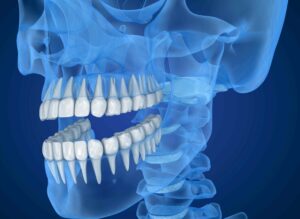
In our Asheville NC periodontal dental office, we feature some of the most advanced imaging and computerized technology available in the industry. These include:
LANAP Protocol Using PerioLase MVP-7: Efficiently and effectively treats periodontitis (advanced gum disease) with laser technology. It causes very little discomfort and has a quick recovery time. This has also been found to stimulate bone regrowth in damaged areas.
Dental Radiology With 3-D Cone Beam Technology: This imaging is ideal for diagnosis and treatment planning. The imaging covers the entire dentition area with clear views of the mandible and maxilla (upper and lower jaw).
CareStream Cone Beam Computer Tomography Imaging: This computerized tomography provides imaging in exceptional detail and range.
CS 3600 intraoral scanner: Patients no longer have to endure having impressions made with bulky, gloopy trays held in their mouths! This quickly and comfortably scans the mouth’s interior for digital impressions using a small, handheld scanner. It can also reach difficult–to–access areas in the patient’s mouth with improved patient comfort.
Simplant Dental Software for Computerized Dental Implant Placement: This system helps in pre-surgical positioning of dental implants on the computer, using a 3D model of the patient’s jaw. This aids in the selection of the implant type that ensures a precision fit.
Intraoral Camera Technology: This provides outstanding quality of images within the mouth. These images are sent to screen for a clear, crisp view so we can confer with patients on specific treatment issues.
Computer Imaging In Treatment Suites: Treatment suites are equipped with computers for convenient image sharing with patients.
Advanced Sterilization: Our custom sterilization unit adheres to (or exceeds) CDC guidelines for instrument processing protocols, particularly in the cleaning of instruments.
Fully-Equipped Surgical Suites: Relax during treatment while surrounded by beautiful mountain views of Asheville.
My staff and I also take great pride in providing patients with optimal comfort, along with an environment of respect. Some adults comes to us embarrassed by the condition of their oral health or missing teeth. Here, we strive to make patients feel they are not only in the right hands, but they are in the right place.
Comfort is supported by our sedation options. These include oral and I.V. sedation. Also referred to as “twilight sleep” or “sleep dentistry,” these sedatives are administered by skilled professionals who utilize advanced safety monitoring equipment.
I believe that the rampant number of people who have gum disease in the U.S. is largely in part due to being unaware of the symptoms. Some are easily ignored or “brushed off” as normal.
This is why it is important to be familiar with the signs and symptoms, which include:
• Red, swollen or tender gums or other pain in your mouth
• Bleeding while brushing, flossing, or when eating certain foods
• Gums that are receding (pulling away from the teeth) or make the appear teeth longer than normal
• Loose or separating teeth
• Pus between your gums and teeth
• Sores in your mouth
• Persistent bad breath
• A change in the way your teeth fit together when you bite
• A change in the fit of partial dentures
If you have any of these, you are urged to seek periodontal care as soon as possible. This disease will only worsen without treatment.
Call 828-274-9440 to schedule a consultation in our state-of-the-art Asheville periodontal dental office.
Nothing To Fear To Accomplish Healthy Smile Here
Posted on Apr 16, 2023 by William J. Claiborne, DDS MS
As a dental specialist, I find that many people are unfamiliar with exactly what a periodontist does. Yet, when they are recommended to see me (typically by their general dentist), it is because they need specialized care that falls under our unique set of skills.
A periodontist has advanced skills to help patients with a variety of needs that involve the gum tissues. These include:
– Treatment of all stages of gum disease (gingivitis, pregnancy gingivitis, periodontal disease, periodontitis)
– Reshaping gum tissues for esthetic enhancement (crown lengthening, gingivectomy for ‘gummy smiles’, repairing areas of gum recession)
– Diagnosis and placement of dental implants
– Treatment of lesions or cysts in oral tissues
Let’s begin with gum disease.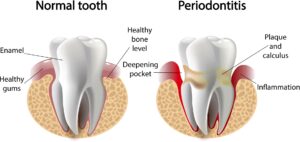
Because the majority of care I provide has to do with the treatment of all stages of periodontal disease, it may be helpful to understand how this develops. Although many people delay or avoid regular dental care (mistakenly thinking “if nothing hurts, then nothing must be wrong”), I have a close-up view of its destructive nature. Its formation creates cavities, periodontal (gum) disease, and leads to eventual tooth loss.
Even people who are committed to a regimen of thorough at-home oral hygiene (twice-daily brushing, daily flossing), can be doing an insufficient job of removing the daily buildup of plaque. Plaque is a sticky film of bacteria that accumulates in the mouth. When not thoroughly removed, it can harden into a mass that attaches to the base of, or in-between, teeth.
In the form of tartar, this cement-hard mass of bacteria cannot be brushed or flossed away. Once tartar forms, it can only be removed by a dentist or hygienist using special tools. Without removal, it will continue to amass and attack gum tissues, working its way beneath the gum line.
Below the gums lie the support system for natural teeth, consisting of tissues, ligaments and bone. When the bacteria reach an uncontrollable level, they become infectious. As these infectious bacteria accumulate further, symptoms of gum disease become more apparent, such as tender or swollen gums or seeing blood in the sink when brushing teeth. Breath odor may be bad on a regular basis.
As symptoms worsen, the gums become red with infectious and loosen their grip around the base of teeth. The gums may become spongy and pus pockets may form. Breath odor at this point is persistently putrid. Eventually, the structures that support teeth are compromised and teeth may loosen. Gum disease is the leading cause of adult tooth loss in the U.S.
Research has found that certain strains of oral bacteria from gum disease create reactions in the body that can trigger systemic inflammation. Thus far, research findings have shown a correlation between periodontal disease bacteria and some cancers (including pancreatic and lung), Alzheimer’s disease, pre-term babies, heart disease, stroke, diabetes, arthritis and erectile dysfunction (ED).
As if all that weren’t bad enough, one study suggests that gum disease relates to a reduction in one’s quality of life: “Periodontal disease has been linked to lower quality of life.” “Quality of life encompasses several domains, including psychological functioning and social relationships among others. Oral health-related quality of life has been shown to be reduced in patients with periodontal disease.” (https://www.hindawi.com/journals/prm/2017/5491923/)
While estimates show about 75 percent of American adults have some degree of dental fear or anxiety, over 47 percent have some level of periodontal disease. As a periodontist, both are alarming numbers. Nearly half our nation is walking around with a potentially life-threatening disease in their mouths.
Treating this may sound like it would be pretty intimidating. However, Although there are many treatments offered and at various levels, our main goal is to provide patients with comfortable and positive experiences at every visit. One way we accomplish this is through the advanced technology featured here in our Western North Carolina periodontal dental office. We feature some of the most advanced in dentistry, much of which is not available in dental offices elsewhere. Some of these features include:
LANAP With PerioLase MVP 7: Laser-Assisted New Attachment Procedure is an advanced protocol that efficiently and effectively treats advanced gum disease with the added advantages of a dental laser. This offers a non-surgical alternative for patients with moderate to severe periodontal disease. LANAP treatment leaves very little discomfort and has a quick recovery time. It has also been found to stimulate bone regrowth in damaged areas.
3D Cone Beam Imaging: Ideal for diagnoses and treatment planning, these images provide a clear view of the upper and lower jaw, used for: intricate review of endodontics; periodontics; orthodontics; implantology: TMJ; and prosthodontics, as well as dental and maxillofacial surgery. Because cone beam radiographs show sagittal, axial, and coronal planes, locating and tracking nerve canals optimizes implant placement. The process is quick, painless and at minimal levels of radiation.
CareStream Cone Beam Computer Tomography Imaging: This enhanced tomography works with 3D imaging for exceptional detail and range.
CS 3600 Intraoral Scanner: Rather than make impressions with bulky, goopy trays, this scanner quickly and comfortably captures digital impressions accurately and easily for creating precision models or appliances (crowns, inlays, onlays, bridges, orthodontic appliances and aligners, custom abutments). The scanner can also reach difficult–to–access areas in the patient’s mouth for superior results with improved patient comfort.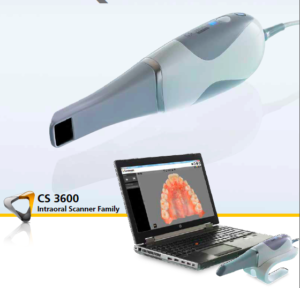
Computerized Dental Implant Placement: This advanced system for pre-surgical positioning of dental implants uses a 3D model of the patient’s jaw. Once the implant type is selected, a template is developed for optimal treatment success, even for complex cases.
In addition, we offer a unique environment for comfort. We understand how dental fear or anxiety can cause people to delay or avoid having dental treatment, sometimes for decades. We believe that every patient deserves respect, a gentle touch and knowing they are in a “lecture free” zone. For those who have high fear levels, we offer several sedation options, including oral and IV sedation.
Oral sedation is a pill that helps patients relax. It also has an amnesiac effect, leaving most with little or no memory of treatment afterward.
I.V. sedation (also known as ‘twilight sleep’) places the patient in a deeper sleep state and erases memory of the procedure. It is administered by a doctor of anesthesiology for optimal comfort and safety. In our Asheville office, anesthesia is overseen by a Medical Doctor (MD) who is a board certified Anesthesiologist.
With both sedation options, patients are closely monitored with advanced safety equipment throughout treatment.
I hope I’ve given you a helpful and positive picture of what a periodontist does and how he/she can help you with some challenging needs; all the while keeping you comfortable, minimizing treatment time, and shortening treatment time.
Although most of our patients are referred to us by other dentists and dental specialists, a referral is not required for accepting a new patient. Call 828-274-9440 if you feel we can make recommendations for your specific needs or provide helpful information.
When Dentures Are “Slippery,” “Wobbly, or “Rocky”…
Posted on Mar 11, 2023 by William J. Claiborne, DDS MS
A periodontal specialist has advanced training in the selection and placement of all dental implant types. Also a specialist in the treatment of all stages of periodontal (gum) disease and the contouring of gum tissues (such as to correct a “gummy smile”), many patients who come to us have lost teeth due to gum disease.
Gum disease is the nation’s leading cause of adult tooth loss. Sadly, over 47% of Americans over the age of 30 have some level of gum disease. Many do not realize they have developed gum disease since it can begin without obvious symptoms.
Periodontitis is the advanced stage of gum disease. Its symptoms are hard to ignore. Breath odor is putrid. The gums bleed easily, at times even when eating. The gums are a dark red and may have a spongy texture. Some teeth may loosen or shift. Pus pockets form around the base of some teeth.
In this advanced stage, some (or all) natural teeth may require removal. For those who choose to replace teeth with a denture or partial (versus dental implants), something occurs below the gums that cannot be seen. However, over time, the repercussions can be quite severe.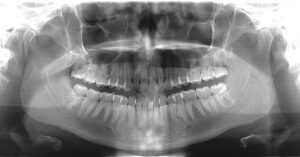
What I’m referring to is “resorption.” This is the term used for a shrinking jaw bone.
Resorption occurs when natural tooth roots are no longer present in the jaw bone. These tooth roots actually help to provide stimulation to the bone. Tooth roots also nourish the bone mass through connective tissues that extend down through a tooth’s interior.
When a tooth is removed, the stimulation and nourishment to that area of the jaw bone is taken away. Without it, the bone begins to shrink. As it declines in height, the adjacent teeth are more vulnerable to loss. Statistics show that teeth neighboring areas where natural teeth are missing will be the most likely to be lost next.
Although a denture or partial can mimic the presence of teeth above the gum line, there is nothing to keep the jaw bones healthy beneath, which is the sturdy foundation for biting and chewing strength. As tooth loss continues, one can go from losing a few teeth to losing all teeth (being “edentulous”).
Many people are unaware that the pressure of wearing dentures or partials accelerates the pace of resorption. For people who sleep in their dental prosthetic, the 24/7 pressure applied to the jaw bones speeds up the rate of bone decline even more.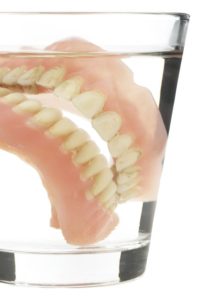
Sleeping in a denture can also add to higher risks for the flu and pneumonia. A 3-year study of more than 500 adults was published by the Journal of International Oral Health. Of the 186 (of 453 denture wearers) who did not remove their dentures for sleeping, they had over twice the risk for pneumonia than those who did. Sleeping in dentures also led to higher levels of tongue and denture plaque, gum inflammation and other oral issues.
For those who wear a denture or partial, losing jaw bone mass also causes a change in the way the denture or partial fits. For example, a denture may fit fine the first year after teeth are removed and a denture is custom-fitted. However, people eventually notice slips when biting or chewing. This is because the bone under the “arch” that supports the denture or partial is declining in height.
The changing foundation for the denture (also known as a ridge) allows it to “slip” or become “wobbly.” As bone loss continues, it causes uncomfortable rubbing on tender gums while eating.
As a result, people often adjust their diet to avoid foods that require rigorous chewing, opting for softer foods that require less chewing. Outings with friends and family become overshadowed by the fear of embarrassing slips.
Eventually, even frequent applications of denture pastes or adhesives are of little help. A reline may be recommended by your dentist to reshape the contours of the denture or partial to the slowly declining arch. Unfortunately, this process will continue as bone loss requires periodic relines as the arch flattens further.
The solution?
For most individuals who are missing one or more natural teeth, we advise replacing teeth with dental implants. A dental implant recreates the presence of a natural tooth. It provides stimulation to the bone, halting the process of bone loss.
Dental implants do not rely on neighboring teeth for support, as in a crown-&-bridge combination. The crowning of bordering natural teeth to support a bridge is not needed. Thus, the integrity of surrounding teeth is protected.
Because dental implants are supported by the jaw bone, sturdy and dependable biting and chewing strength is restored. Eating a healthy diet of the foods you love is again possible.
And, dental implants also have an exceptional success rate, higher than any implant-in-bone option. They are designed to last a lifetime, making them an excellent investment.
If you are considering dental implants to replace missing teeth, we invite you to begin with a consultation appointment. This will take place in a private room where we can discuss your needs and concerns. Call 828-274-9440 to schedule, or tap here for more contact information.
Mental Health Can Adversely Affect Oral Health
Posted on Mar 06, 2023 by William J. Claiborne, DDS MS
It seems almost every week that I read findings of recent studies that correlate oral health to overall health. It is not surprising that research newly shared reveals connections of how mental health can affect oral health, and vice versa.
It shows that people with mental conditions can be a contributing factor to poor oral hygiene. These conditions include depression, mood disorders, anxiety, OCD (obsessive-compulsive disorders), mood disorders, and eating disorders. These individuals are 2.7 times more likely to experience tooth loss early.
One factor is anxiety and panic, which are often associated with dental treatment.
According to the National Institute of Mental Health, mental illnesses in the U.S. Nearly 1 in 5 adults have with a mental illness (52.9 million in 2020). These numbers have increased post-pandemic.
The Mayo Clinic shared:
“Surveys show a major increase in the number of U.S. adults who report symptoms of stress, anxiety, depression and insomnia during the pandemic, compared with surveys before the pandemic. Some people have increased their use of alcohol or drugs, thinking that can help them cope with their fears about the pandemic. In reality, using these substances can worsen anxiety and depression.”
Poor dental health can be seen in depressed people by a dentist. For example, over 46% of depressed people report tooth pain without apparent cause, known as atypical odontalgia. Too, burning mouth syndrome is an oral condition more common with adults suffering from depression.
Additionally, mental conditions have been linked to oral conditions, such as:
Gum inflammation
Periodontal disease
Cavities
Dry mouth
Chronic jaw and facial pain
Oral ulcers
The relationship between the two – oral health and mental health – seems to lie in cortisol levels. Cortisol is a stress hormone. Stress and anxiety cortisol levels that are too high adversely affect the immune system. This increases the risk of gum disease, oral sores, and infections.
Seeking professional help at the right time is essential to manage an excellent oral and mental state and overall health.
There is also a domino effect once depression or anxiety trigger an imbalance in cortisol. When one’s smile is in poor condition (cavities, stained teeth, missing teeth, bad breath), it can lead to low self-esteem and social isolation. This contributes to a lower quality of life and, in turn, disrupted mental health.
Mental health status has been shown to activate, aggravate or worsen oral problems. These include…
•Gum health and periodontitis (advanced gum disease)
When stress and periodontal disease negatively impact the body’s immune system, inflammation often worsens gum disease. Too, people who endure ongoing stress are more likely to smoke, drink alcohol, or take drugs. These can cause people to neglect maintaining good oral hygiene and be less committed to having regular dental checkups.
•Dry mouth
Eating disorders (such as anorexia nervosa and bulimia) can reduce the amount of saliva – the mouth’s bacteria-rinsing agent. A dry mouth enables the growth of bacteria. Add to this is how many antidepressant medications have a side effect of causing oral dryness.
•Pain in jaw joints
Chronic stress and anxiety are frequent contributors to facial and jaw pain. Teeth grinding and clenching are not uncommon among people with mental conditions. These actions can cause broken, worn or chipped teeth in addition to the painful conditions associated with TMJ disorders.
•Oral ulcers
Lip, tongue, and ulcers inside the mouth can occur more often in people under frequent or chronic stress.
•Developing Cavities
Individuals with mental illnesses are more likely to have dental decay due to a rise in cavity-causing bacterium with a reduced saliva flow – a recipe for developing cavities.
•Tooth erosion
Bulimia is an eating disorder in which vomiting is used to lose weight. Over a third of bulimia patients with eating disorders suffer from tooth erosion due to regurgitated stomach acids that cause tooth erosion.
•Oral cancer
When dental health neglect is coupled with heavy consumptions of alcohol and smoking, the risk of oral cancers increases. Persons who are heavy smokers and drinkers are 50 times more likely to get oral cancer compared to those who never smoke or drink heavily.
Obviously, mental health is closely connected to your oral health. Begin by speaking with a therapist or mental health specialist. Taking care of your mental health is vital to overcome related dental issues.
If you are noticing any of the signs of oral health problems, you should see a periodontal specialist as soon as possible. These signs and symptoms include:
– Bleeding gums when brushing
– Frequent bad breath
– Red, swollen gums
– Gums that are tender or sore
– Gums that pull away from the base of teeth
– Loose teeth
A periodontist is a dental specialist who can help you restore your oral health and enjoy a confident smile. If you’ve experience tooth loss, a periodontist also specializes in the placement of dental implants.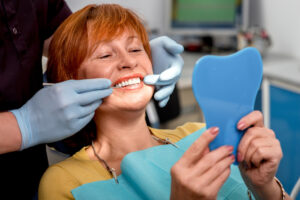
Our Asheville periodontal office also provides sedation options. These include oral and I.V. sedation (“twilight sleep”). These are administered safely by a doctor of anesthesiology who uses advanced safety equipment to monitor you throughout your procedure.
Call 828-274-9440 to schedule an exam or an initial consultation to get to know us better.
Sources include:
https://health.uconn.edu/sbirtacademy/wp-content/uploads/sites/101/2016/08/Dental-brochure.pdf
Recent Posts
Categories
Archives
- September 2024
- August 2024
- July 2024
- June 2024
- May 2024
- April 2024
- March 2024
- February 2024
- January 2024
- December 2023
- November 2023
- October 2023
- September 2023
- August 2023
- July 2023
- June 2023
- May 2023
- April 2023
- March 2023
- February 2023
- January 2023
- December 2022
- November 2022
- October 2022
- September 2022
- August 2022
- July 2022
- June 2022
- May 2022
- April 2022
- March 2022
- February 2022
- January 2022
- December 2021
- November 2021
- October 2021
- September 2021
- August 2021
- July 2021
- June 2021
- May 2021
- April 2021
- March 2021
- February 2021
- January 2021
- December 2020
- November 2020
- October 2020
- September 2020
- August 2020
- July 2020
- June 2020
- May 2020
- April 2020
- March 2020
- February 2020
- January 2020
- December 2019
- November 2019
- October 2019
- September 2019
- August 2019
- July 2019
- June 2019
- May 2019
- April 2019
- March 2019
- February 2019
- January 2019
- December 2018
- November 2018
- October 2018
- September 2018
- August 2018
- July 2018
- June 2018
- May 2018
- April 2018
- March 2018
- February 2018
- January 2018
- December 2017
- November 2017
- October 2017
- September 2017
- August 2017
- July 2017
- June 2017
- May 2017
- April 2017
- March 2017
- February 2017
- January 2017
- December 2016
- November 2016
- October 2016
- September 2016
- August 2016
- July 2016
- June 2016
- May 2016
- April 2016
- March 2016
- February 2016
- January 2016
- December 2015
- November 2015
- October 2015
- September 2015
- August 2015
- July 2015
- June 2015
- May 2015
- April 2015
- March 2015
- February 2015
- January 2015
- December 2014
- November 2014
- October 2014
- September 2014
- August 2014
- July 2014
- June 2014
- May 2014
- April 2014
- March 2014
- February 2014
- January 2014
- December 2013
- November 2013
- October 2013
- September 2013
- August 2013
- July 2013
- June 2013
- May 2013
- April 2013
- March 2013
- February 2013
- January 2013
- December 2012
- November 2012
- October 2012
- September 2012
- August 2012
- July 2012
- June 2012


